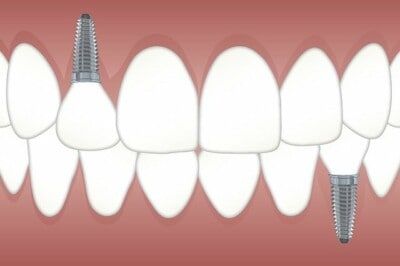Dental implants: What different variants are there?
Tooth loss means both a health and an aesthetic impairment for affected persons in practice. The reasons for missing teeth can be versatile.
Whether it is due to a dental disease such as caries and periodontal disease or a traffic accident – the loss of one or even more teeth always means a certain impairment in everyday life.
However, the impairment in daily life must not be accepted by affected persons. Dental implants offer the possibility of replacing a missing tooth.
Dental implants fit perfectly to the dentition and guarantee that there will be no misalignment of the jaw. Who decides for dental implants, can fall back on many different variants.
Which dental implant is the right one is decided in consultation with the treating dentist. Many competent and professional dentists belong to the Federal Dental Association.
Hereby patients can be sure to be in good hands for this important procedure. Among others, there are the following variants for dental implants:
- Mini implants,
- Narrow implants,
- Short implants,
- One-piece implants,
- Two-piece implants,
- Zygoma implants.
The diameter of dental implants is usually in the range between 3.3 mm and 5 mm. These implants are then inserted into the jaw and can thus replace one or more teeth in the dentition of affected persons.
Which length is finally the most suitable depends on the individual jaw condition of the patient.
Different applications for dental implants
In practice, there are many different applications for replacing missing teeth in the patient’s jaws. For example, dental implants from Regensburg offer excellent quality and can create a completely new attitude to life by restoring the old dentition.
A missing single tooth is a particularly common cause for the use of dental implants. When a single tooth is missing from the jaw, it is often due to an untreated caries disease.
In any case, it is advisable to replace a single missing tooth, otherwise the surrounding teeth may become misaligned as well as displaced.
If, on the other hand, two directly adjacent teeth are missing, this is referred to as an interdental gap. In this constellation it is also particularly important to provide for tooth replacement.
Suitable dental implants can quickly close this gap. If, on the other hand, you decide in favor of a bridge, you must take into account that the adjacent teeth must first be ground down. This is the only way to guarantee the correct hold and fit of the bridge in the patient’s jaw.
The free-end situation, on the other hand, is a particularly complicated constellation in the case of tooth loss. This means that at the end of a row of teeth all molars are missing. A bridge cannot be used here, because at the end of the tooth row the suitable support is missing.
Missing molars are a particular burden in everyday life, since problem-free chewing is no longer possible. However, dental implants offer the option of compensating for this deficiency and providing a high-quality replacement for the missing molars.
By the way, dental implants can also be the right solution for patients with a completely toothless jaw.
Bridges as an alternative to dental implants?
In addition to the use of dental implants, there are other options that are theoretically possible in practice. Bridges are used particularly frequently for this purpose.
However, bridges are usually only used in the case of tooth loss if only one or at most two adjacent teeth are involved. If you decide to have a bridge, you have to consider that the surrounding teeth have to serve for the support of this bridge.
Dental implants are therefore in most cases the higher quality option to regain the usual quality of life after tooth loss.








